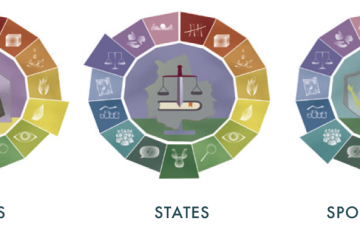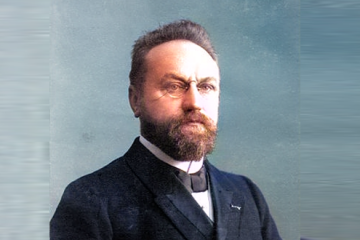A few weeks ago, Biblical scholar and philosopher Richard Middleton visited FiSch as part of a UK tour. This got me very excited, as I’ve read some of his work and found it very helpful, and Anthony and I managed to go along to a talk in Durham and two in Leeds. Here I’d like to share what Richard spoke about in one of the Leeds talks, as it provides encouragement and a solid theological foundation for scholarly work. The talk was entitled ‘Why are we here? Our sacred calling in God’s world’ and was based on Richard’s book ‘A new heaven and a new earth, Reclaiming Biblical eschatology‘, which, incidentally, is a great book[1]!
Richard went back to the beginning: the first few chapters of Genesis describe the creation of the universe using building imagery. The first verse of Genesis 1 is all-encompassing: God created the heavens and the earth. Remarkably, this implies that heaven is part of creation. In a number of places the Bible says that ‘God’s throne is in the heavens’. God therefore chooses to indwell his creation. The creation is God’s house. Indeed, it is a temple!
Humans, in Genesis 1 and 2, are not created to ‘worship God and enjoy him forever’, at least if you understand ‘worship’ to be singing God’s praises in church! No, humans are created with a task, and this task is their ‘reasonable worship’ (Rom. 12:1). Their task is to image God by ’tilling and keeping the garden’. This is both a royal task and a holy task.
In the ancient Near East, ‘the image of God’ used to refer to the cult image of the God in the temple. However, besides this image of inert material, there was also a living image: the king[2]. Besides being the ruler of his people, he was usually also the high priest. In this context, it is significant that the people of Israel initially did not have a king: they were to be a royal priesthood (1 Pet. 2:9). Instead of one elite person, the entire human race is called to manifest God’s lordship over the earth.
Genesis 2 explicitly states that ‘God planted a garden’, starting the first human cultural project. The creation is declared to be ‘very good’, but this leaves space for development. Creation thus has an eschatological element to it: it is going somewhere. God breathes life into the human beings he has made, so that they would be sites of God’s presence in the world to prepare the world for God’s eschatological filling of it. Humans have the important task to image God by ’tilling and keeping’, developing his creation. Prov. 3:19-20 says that God constructed the cosmos by wisdom, understanding and knowledge. In Prov. 24:3-4 the exact same words are used to describe the human project of building a house, and in Ex. 31 these qualities are ascribed to the craftsman Bezalel, who oversaw the building of the tabernacle.
Of course this is precisely what we are doing in our scholarly endeavours! A proper understanding of creation leads us to affirm and encourage the cultural activity of developing God’s creation, whether that is the non-human creation, or things that have been created by humans, such as art, literature, cities, or bridges. How does your scholarly work reflect God’s work in creation? How does it develop his creation?
[1] Some of the ideas discussed here can also be traced back to his earlier book ‘The liberating image: The imago dei in Genesis 1‘ and the book ‘The transforming vision: Shaping a Christian worldview‘, which he co-authored with Brian Walsh.
[2] For example, the name of the famous pharaoh, Tutankhamun, literally means ‘living image of [the god] Amun’.
- Evolution and epistemic humility - January 14, 2019
- Jesus, virtue and the university - September 4, 2017
- Welcome to the University of Babylon! - August 21, 2017


